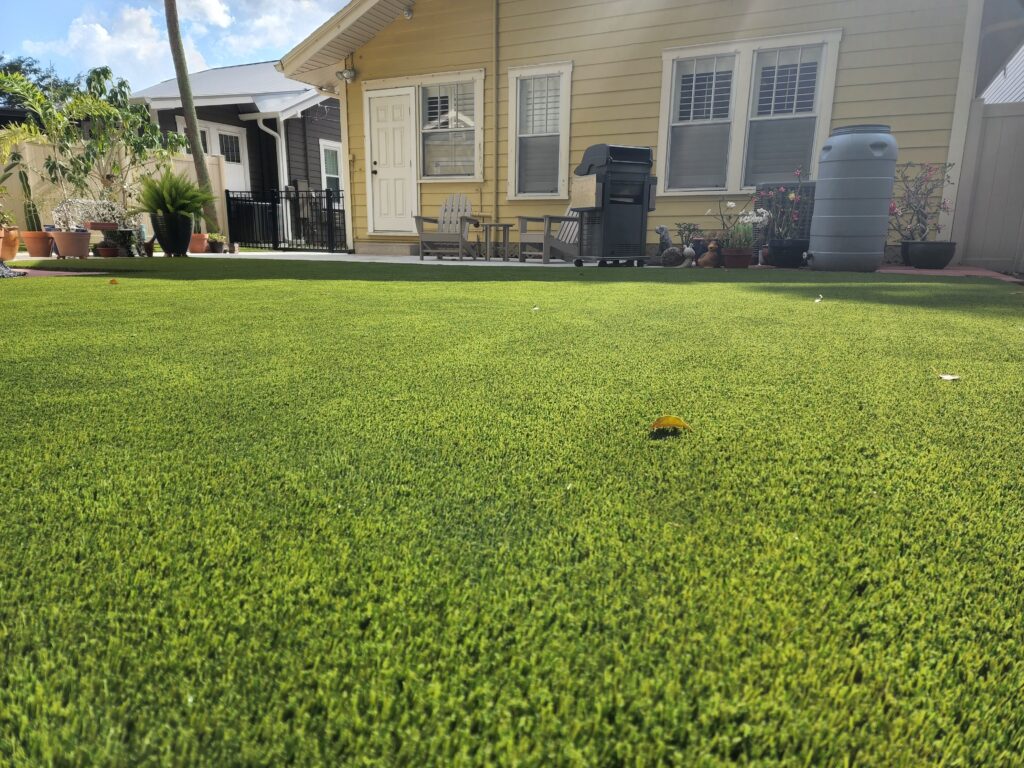In the ever-evolving landscape of modern sports and landscaping, synthetic turf has emerged as a revolutionary alternative to natural grass. With its vibrant appearance and low maintenance requirements, it has found widespread application in sports fields, playgrounds, and even residential lawns. But what exactly goes into the creation of this lush, green carpet that mimics the aesthetics and functionality of natural grass? Let’s delve into the intricate layers that constitute synthetic turf.
1. Base Layer: At the very foundation lies a base layer, typically composed of compacted gravel or crushed stone. This layer serves as the anchor for the entire turf system, providing stability and drainage.
2. Drainage Layer: Above the base layer lies a crucial component – the drainage layer. Comprising porous materials such as sand or silica, this layer facilitates efficient drainage, preventing waterlogging and ensuring a dry and playable surface even during heavy rains.
3. Cushioning Layer (Optional): In some installations, especially those designed for sports with high impact, a cushioning layer may be added above the drainage layer. Made from materials like recycled rubber or foam pads, this layer enhances shock absorption, reducing the risk of injuries to athletes.
4. Synthetic Grass Fibers: The star of the show – the synthetic grass fibers – are meticulously engineered to replicate the look and feel of natural grass. These fibers are typically made from polyethylene or polypropylene, both durable and UV-resistant materials. Through advanced manufacturing processes, these fibers are shaped and textured to mimic the characteristics of natural grass blades, offering a realistic appearance and a soft, comfortable surface.
5. Infill Materials: To enhance stability, resilience, and performance, synthetic turf is often filled with infill materials. These can include silica sand, crumb rubber made from recycled tires, or organic materials like cork or coconut husks. Infill materials help to support the fibers, maintain evenness, and improve traction for athletes.
6. Top Layer (Optional): In certain applications, especially those requiring specific performance characteristics such as increased ball speed in sports like soccer or hockey, a top layer may be added. This layer typically consists of sand or a specialized infill blend, providing additional ballast and control.
7. Antimicrobial Coating (Optional): In environments where hygiene is a priority, such as daycare centers or pet facilities, synthetic turf may be treated with antimicrobial coatings. These coatings help to inhibit the growth of bacteria, mold, and mildew, ensuring a clean and safe playing surface.
Conclusion: Artificial grass represents a remarkable marriage of science and nature, offering a versatile and sustainable solution for various landscaping and sporting needs. By understanding the intricate composition of synthetic turf, we gain insight into the innovative technologies and materials driving its evolution. As research and development continue to push the boundaries of what is possible, we can expect synthetic turf to remain a cornerstone of modern outdoor environments for years to come.

synthetic turf installation
TK Turf
601 N Ashley Dr Suite #1100, Tampa, FL. 33602
(813) 534-4220
https://turfgrasstampabay.com/

Recent Comments